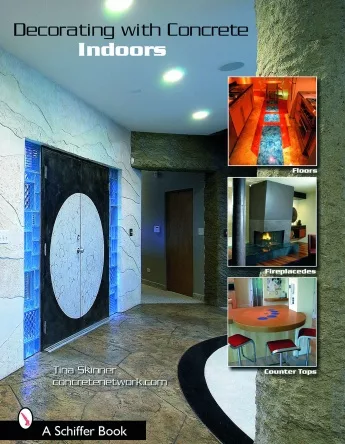On the Clock with a School Project: Delivering that Education Opportunity


|
| So you landed that elusive school contract. Be warned: Despite all the planning you’ve done beforehand, little details are bound to crop up that could become big problems, and the clock is ticking. The only way to make it through this is to communicate clearly and effectively with your team and the school. |
Jeff was feeling pretty pleased with himself, having won the contract for carpet and resilient flooring at a local school system. Now there was the challenge of delivery since he already had 10 orders in hand and it was only June. And “everyone is looking to see how the new kid will perform during the crunch time of July and August.”
When Jeff was getting ready to bid for the annual school contract, he discussed the probablescope of the contract and timing with the installation manager; manpower required, crew size, and specific crews that would likely be used. An integral part of that meeting dealt with the critical issue of finishing all jobs prior to school opening, the day after Labor Day. The bottom line was to get the jobs done and punched out, no excuses, whatever it took.
First steps. Now that he had the first orders in on the contract, it was time to have another meeting with the team, a “refresher.” A meeting was scheduled with the installation service manager, dispatcher, field inspectors, project manager, project estimator, and the four crew chiefs that would be expected to install a variety of carpet and resilient including accessory items.
The theme of the meeting was to get it done right, the first time, and on time. To underscore the school contract’s importance to the company, Jeff gave an estimate of dollar volume, yards of carpet and square feet of resilient: “We’re looking at over $500,000 in volume, some 18,000 yards of carpet and 85,000 feet of tile and sheet goods. Our first shipments of product will be here in 10 days, so we’re gearing up for a late June start, just as soon as school is out.” There were smiles all around since business had been tight.
Crew meeting. After the team meeting, there was a follow up with each crew chief and his team members to discuss the specific requirements of the school system and company procedures that were unique to this contract performance. This was an important, high priority contract. Mistakes and substandard performance would be magnified since the time window for successful installation was only six to eight weeks.
There was to be a fair amount of other remodeling going on at some school locations in addition to new flooring. The project manager, project supervisor, or field inspector would be on hand to address the “other trades” issue with school personnel. Tight scheduling would eliminate mostproblems, “but despite this, there will be frustrating, unexpected situations cropping up; don’t get angry or punch the drywall guy or knock the electrician off his ladder, okay? We will handle itand get the project back on track.”
Again, there were smiles around the table because there had beena widely reported altercation between an installer and a drywall finisher that resulted in both being thrown off the job. “Just do your job and keep your cool; let us know when there’s a problem.”
Procedures and scheduling. Orders were placed and as the products began to arrive, they were segregated according to school project. The project estimator did a final site visit to determine site readiness. As always happens, somejobs were more critical than others or would have to be delayed where remodeling had not been completed. Others, where demo and install could be done at any time, were scheduled first.
Where possible, the crew’s time would be blocked out so as to do all available projects within a particular school to reduce delivery and travel time. This type of efficiency was onlypossible where purchasing, shipment, delivery, and accuracywere in sync. That was the goal for all. Get the product in, inspect, segregate, assemble the components, and deliver to the job.
Getting the job started right.Murphy’s Law always operates when one least expects it. To prevent glitches and lost time, the project manager or supervisor made it their policy to be on the job the first day. Introductions were made to school inspectors, and a review was made of the site layout, specified requirements or unusual details, and school opening and closing times. Comparison of work orders and project notes, visual inspection of areas and products were also completed. Where there were wrong products, missing (or non-existent) room numbers, or a variance in site condition, corrections could be made.
And so began the school work schedule for the summer. Despite all of that planning, here were just someof the challenges encountered…
“The HVAC is out and it’s HOT.” The first inkling the project supervisor, Todd, had of a problem was the phone call from his installer. “It’s hot as hell here, demo is slow, and patch is taking forever to cure out. The A/C’s down and won’t be fixed until next week.” The crew was about to walk off the job!
In fact, the new A/C unit had just arrived and was going to be installed the following day. After talking with Todd, high-speed air movers were used to clear out the stale, stuffy air until the A/C was back in operation. Todd’s delivery of an ice chest with bottles of water and soft drinks also made a big hit with the crew. It was clear someone was listening. The project continued without interruption.
“Uh, oh, the floor is coming up with the demolition.” As was outlined in the initial meetings, the crew chief called because additional floor prep would be needed and was notcovered by the work order. He stopped work while the project estimator, Frank, came by the job and reviewed the amount of time and materials needed to make the floor ready to receive resilient.
The change order request was sent over to the school facility manager for approval. The school did their own inspection and approved an addition to the contract on a not to exceed dollar limit. Should additional work (and an increase in dollars) be required, it would have to be approved in advance. Work resumed after a minor delay but the amount of extra work delayed completion by several days.
“I can’t get the old carpet up.” This news came on the heels of a continued litany of complaints and slow production at this particular school. Unfortunately, when the school had purchased their previous carpet, it was a lower grade installed with premiumgrade adhesive. It was being replaced in three years rather than the typical seven or more years. The adhesive was still “active” and was quite resistant to take up.
Arlo, the installation manager, had a solution: Send out another crew out with several heavy-duty stripping machines to handle the take uprather than expect the original crew to handle everything. Of course, there had to be a work order adjustment with the first crew, but some of the extra money was made up through a change order due to “unforeseen site conditions.” The job finished on schedule.
“I cannot get a clean floor, debris is everywhere.” That was what Jeff was told when he asked the crew chief, “How’s it going? I need a status report since I thought you’d be wrapping up by now.” After walking the entire job, he found electricians and the painter still working in manyareas. The school’s field supervisor seemed to have no clue that anything was wrong.
Jeff ended up pulling the crew to another school and arranged for lockedon-site storagefor materials until the job could be resumed. A good call by Jeff. Chet, the school chief, agreed with the decision to pull the crew. He also put a more senior supervisor on that school to direct traffic. Work resumed after a four-day delay.
“There’s a problem with the pattern in the carpet.” The warehouse manager agreed with Jeff that the defect shouldhave been caught during the initial inspection at the warehouse. However, it wasn’t and now the issue was extra seaming and having extra carpet to replace what was lost after cutting out the defects.
When Jeff talked with the mill rep and explained the issues, an accommodationwas reached: Extra carpet would be provided at no charge in the same mill run; since carpet was being installed in adjacent areas, any shade off would be minimized. This was a visual defect (a tufting issue), so reduced performance was not an issue. A further credit would be given against the mill invoice to make up for all of the additional work. The project continued on schedule and the installer was compensated for his extra effort.
“Sorry to spring this on you, but I need these four projects done, too.” Those were the words of the school’s facility chief. While Jeff was happy about the extra work, he had already scheduled out every available crew to meet the September deadlines. “Okay, Chet, let me see what I can do. You know we’re already stretched out to meet your finish dates. How flexibleare you on product and color?” Chet responded with, “It needs to be level-loop carpet in blueor dark tan. I’ve got to have something fuzzy on those floors.” Carpet was located and the mill shipped within 24 hours; an additional crew was pulled from another job for the extra high priority areas.
This is how the summer went for Jeff. Even with all the planning and prep, there were still cases where carpet was installed in the wrong room, the wrong resilient and wall base ended up across the hall, and installers showed up at the wrong school. Mistakes were made, glitches were corrected but all of the jobs were finished on schedule.
As Jeff found out, school business can be a lot of volume and profitable, but very stressful. The school contract made his year and the company’s reputation with the school system. The best accolade of all was when the school contract was renewed for the next year without more bidding. Teamwork in the successful delivery of projects was crucial to their success.
Looking for a reprint of this article?
From high-res PDFs to custom plaques, order your copy today!







